Jagow, Dietrich Wilhelm Bernhard von born 29-02-1892 in Frankfurt am Oder 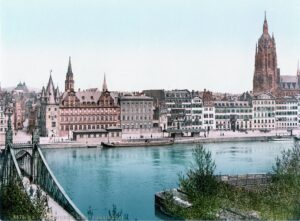 in the distinguished aristocratic family, of Eduard* Georg von Jagow (1850-1927) and his wife Elisabeth, born von Kleist (1859-1938) Jagow had one brother Hans-Georg Eduard Ewald von Jagow.(1880-1945).
in the distinguished aristocratic family, of Eduard* Georg von Jagow (1850-1927) and his wife Elisabeth, born von Kleist (1859-1938) Jagow had one brother Hans-Georg Eduard Ewald von Jagow.(1880-1945). 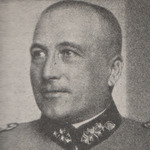 Hans Georg was a German officer, most recently Lieutenant General and President of Magdeburg. His uncles were Bernhard Erasmus von Jagow and Ernst von Jagow.
Hans Georg was a German officer, most recently Lieutenant General and President of Magdeburg. His uncles were Bernhard Erasmus von Jagow and Ernst von Jagow. 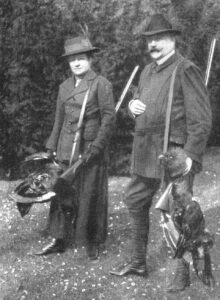 After attending school, Jagow joined the Imperial Navy
After attending school, Jagow joined the Imperial Navy 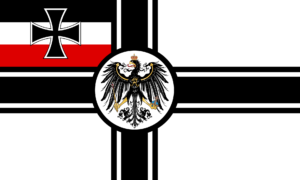 on 01-04-1912 and embarked on an officer’s career. He attended the Mürwik Naval School
on 01-04-1912 and embarked on an officer’s career. He attended the Mürwik Naval School 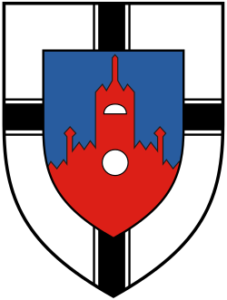 and served on the SMS Hansa
and served on the SMS Hansa 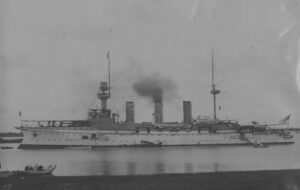 .The Hansa was the last ship of the Victoria Louise class, a class of five cruisers designed as armored deck cruisers II. Class of the Imperial Navy. The Hansa was used as a foreign cruiser and training ship from 1899, was deployed in the early days of the First World War and was scrapped in 1920.
.The Hansa was the last ship of the Victoria Louise class, a class of five cruisers designed as armored deck cruisers II. Class of the Imperial Navy. The Hansa was used as a foreign cruiser and training ship from 1899, was deployed in the early days of the First World War and was scrapped in 1920.
During the First World War, he served on submarines, among other things. After the armistice, he commanded a minesweeper. In 1920, he refused to take the oath of allegiance to the Weimar Constitution and retired from active service with the rank of first lieutenant at sea. ![]() In September 1919, von Jagow joined the Ehrhardt Brigade, with which he took part in the Kapp Putsch.
In September 1919, von Jagow joined the Ehrhardt Brigade, with which he took part in the Kapp Putsch. 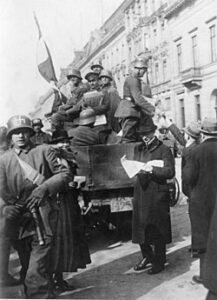 Members of the Ehrhardt Marine Brigade on 13-03-1920 during the Kapp Putsch in Berlin
Members of the Ehrhardt Marine Brigade on 13-03-1920 during the Kapp Putsch in Berlin
He was a member of the leadership committee of the terrorist organization Organisation Consul and was also active in its successor organization, the Bund Wiking (district leader in Württemberg and Baden from 1922 to 1928). He became a member of Adolf Hitler‘s NSDAP  in the fall of 1920 and the SA in the winter of 1920/21. During this time, he worked as a forestry and agricultural worker for a front company of the Consul organization, the Bayrische Holzverarbeitungsgesellschaft AG. In 1921, he briefly took part in the fight against the 3rd Polish Uprising
in the fall of 1920 and the SA in the winter of 1920/21. During this time, he worked as a forestry and agricultural worker for a front company of the Consul organization, the Bayrische Holzverarbeitungsgesellschaft AG. In 1921, he briefly took part in the fight against the 3rd Polish Uprising 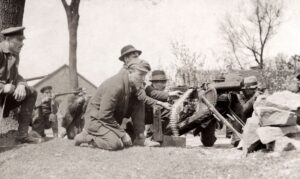 as a platoon leader in the Koppe assault company under Manfred Freiherr von Killinger.
as a platoon leader in the Koppe assault company under Manfred Freiherr von Killinger. 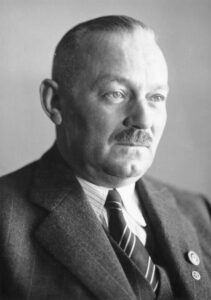
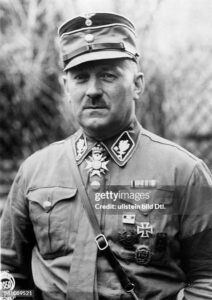 Von Killinger, age 58, shot his secretary and mistress Helga Petersen and then himself in the embassy building on 02-09-1944 to avoid arrestManfred Freiherr von Killinger had been married to Gertrud (born Martin) since 24-01-1917. The marriage produced two daughters (Brigitte Freiin von Killinger, married name Volke, and Renate Freiin von Killinger, married name von Holtzendorff). His wife and daughters took their own lives after the end of the Second World War on 10-05-1945. The common grave is located in the cemetery of Schellerhau in the Osterzgebirge.
Von Killinger, age 58, shot his secretary and mistress Helga Petersen and then himself in the embassy building on 02-09-1944 to avoid arrestManfred Freiherr von Killinger had been married to Gertrud (born Martin) since 24-01-1917. The marriage produced two daughters (Brigitte Freiin von Killinger, married name Volke, and Renate Freiin von Killinger, married name von Holtzendorff). His wife and daughters took their own lives after the end of the Second World War on 10-05-1945. The common grave is located in the cemetery of Schellerhau in the Osterzgebirge.
In January 1922, Adolf Hitler sent von Jagow to Tübingen as an instructor of the Nazi movement and inspector of the Württemberg SA 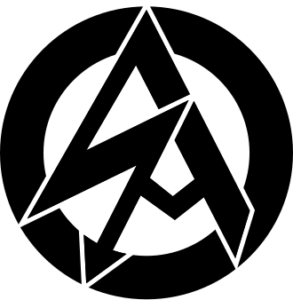 . At the same time, he was also to set up the Consul organization there, which he said he remained the state leader of until 1927, and train the Tübingen student battalion. As a cover, von Jagow enrolled as a guest student at the Eberhard Karls University,
. At the same time, he was also to set up the Consul organization there, which he said he remained the state leader of until 1927, and train the Tübingen student battalion. As a cover, von Jagow enrolled as a guest student at the Eberhard Karls University, 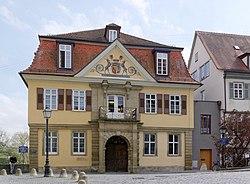 worked as a trainee in the Osiander bookshop and was a traveling sales representative. He established contacts with numerous folk and nationalist organizations, founded several local NSDAP groups and other Nazi formations. After Walther Rathenau’s
worked as a trainee in the Osiander bookshop and was a traveling sales representative. He established contacts with numerous folk and nationalist organizations, founded several local NSDAP groups and other Nazi formations. After Walther Rathenau’s 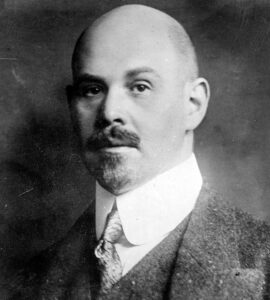 assassination, he was investigated without result. After the failed Hitler putsch, von Jagow resigned from the now dissolved NSDAP in autumn 1923, but apparently continued his organizational activities. In 1927 he joined the Stahlhelm, Bund der Frontsoldaten,
assassination, he was investigated without result. After the failed Hitler putsch, von Jagow resigned from the now dissolved NSDAP in autumn 1923, but apparently continued his organizational activities. In 1927 he joined the Stahlhelm, Bund der Frontsoldaten, 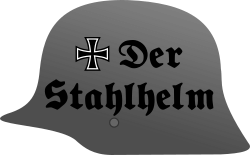 in 1928 the Württembergischer Heimatschutz. Der Stahlhelm was formed on 25-12-1918 in Magdeburg, Province of Saxony, Germany, by chemical producer and soda water factory owner and First World War–disabled reserve officer Franz Seldte,
in 1928 the Württembergischer Heimatschutz. Der Stahlhelm was formed on 25-12-1918 in Magdeburg, Province of Saxony, Germany, by chemical producer and soda water factory owner and First World War–disabled reserve officer Franz Seldte,
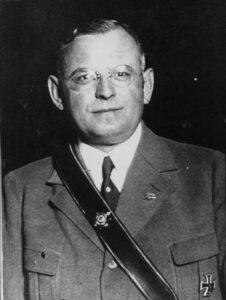
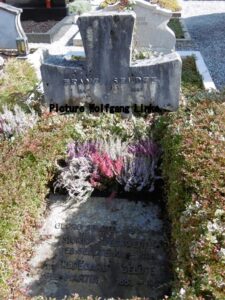 his brothers Eugen and Georg and a dozen comrades of the 66th German Infantry Regiment, 26th Wurtenburger Infantry Division.. On 01-01-1929 he rejoined the NSDAP (membership number 110.538). Between 1929 and 1930, he was local group leader in Eßlingen am Neckar and general manager of the NSDAP in Württemberg until he was appointed full-time SA group leader “Southwest” in 1931. During this time, he made a name for himself as an anti-Semite and propagandist of the “Führer” principle and campaigned for the SA. From May 09-05-1932, von Jagow was a member of the Reichstag, initially as a successor, and remained so until 1945, initially for constituency 31 (Württemberg) and from 1936 for constituency 3 (Berlin East).
his brothers Eugen and Georg and a dozen comrades of the 66th German Infantry Regiment, 26th Wurtenburger Infantry Division.. On 01-01-1929 he rejoined the NSDAP (membership number 110.538). Between 1929 and 1930, he was local group leader in Eßlingen am Neckar and general manager of the NSDAP in Württemberg until he was appointed full-time SA group leader “Southwest” in 1931. During this time, he made a name for himself as an anti-Semite and propagandist of the “Führer” principle and campaigned for the SA. From May 09-05-1932, von Jagow was a member of the Reichstag, initially as a successor, and remained so until 1945, initially for constituency 31 (Württemberg) and from 1936 for constituency 3 (Berlin East).
In June 1933, he also received the rank of SA-Obergruppenführer and was appointed Prussian State Councillor in September 1933. After the assassination of Ernst Julius Röhm

 during the so-called Röhm Putsch, Jagow was transferred to the Berlin-Brandenburg SA group, which he led from 27-07-1934 to January 1942. In 1934, he also became a member of the People’s Court and in 1934, he became Prussian Provincial Councillor of the Province of Hesse-Nassau and then of the Province of Brandenburg. From 1935, he was a councillor in Berlin and a member of the board of the German Nobility Cooperatives. From April 1936 he was an honorary judge at the DAF’s Supreme Court of Honor and Discipline.Von Jagow reactivated his connections to the navy, took part in military exercises as a reserve officer and observed the Spanish Civil War as an intelligence officer on the armored ship Admiral Graf Spee.
during the so-called Röhm Putsch, Jagow was transferred to the Berlin-Brandenburg SA group, which he led from 27-07-1934 to January 1942. In 1934, he also became a member of the People’s Court and in 1934, he became Prussian Provincial Councillor of the Province of Hesse-Nassau and then of the Province of Brandenburg. From 1935, he was a councillor in Berlin and a member of the board of the German Nobility Cooperatives. From April 1936 he was an honorary judge at the DAF’s Supreme Court of Honor and Discipline.Von Jagow reactivated his connections to the navy, took part in military exercises as a reserve officer and observed the Spanish Civil War as an intelligence officer on the armored ship Admiral Graf Spee. 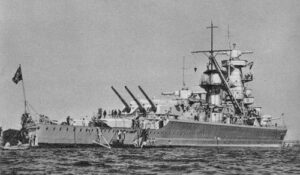 Through his mediation, the naval officer Walther Rauff,
Through his mediation, the naval officer Walther Rauff, 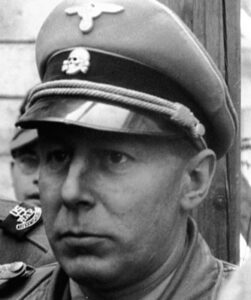 who had retired from active service in 1937, immediately found employment with the SD Main Office.
who had retired from active service in 1937, immediately found employment with the SD Main Office.
From 1939 to 1941, he took part in the Second World War as a naval officer in minesweeper and outpost units. From September 1939 to May 1940, he commanded the mineship Tannenberg in the Baltic Sea, was then assigned to the Baltic Sea Naval Station and from October 1940 to the end of April 1941, he was head of the 18th Outpost Flotilla in the English Channel as a corvette captain. After a spell at the High Command of the Navy, von Jagow was appointed German envoy to Hungary in the summer of 1941. In Budapest, he endeavored to promote the Hungarian war effort and urged the Hungarian government to support the German “Final Solution to the Jewish Question”. He returned to Berlin in March 1944 and was called up to the Foreign Office in May 1944.
Death and burial ground of Jagow, Dietrich Wilhelm Bernhard von.
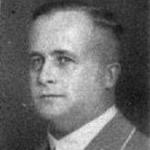
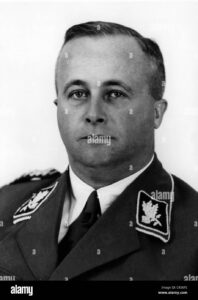
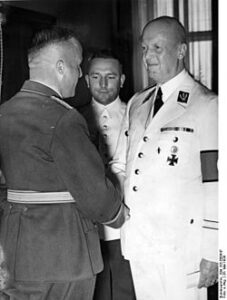
 Jagow (back to the camera) with Hans Heinrich Lammers, 26-05-1939
Jagow (back to the camera) with Hans Heinrich Lammers, 26-05-1939 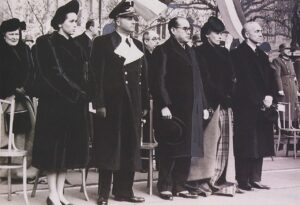 Von Jagow und László Bárdossy (right) (1941) László Bárdossy von Bárdos (* 10-12-1890 in Szombathely, Austria-Hungary; † (executed) 10-01-1946, age 56, in Budapest) was a Hungarian diplomat and politician. Bárdossy was found guilty of war crimes and collaboration with the Nazis, sentenced to death and executed by firing squad in Budapest on 10-01-1946.
Von Jagow und László Bárdossy (right) (1941) László Bárdossy von Bárdos (* 10-12-1890 in Szombathely, Austria-Hungary; † (executed) 10-01-1946, age 56, in Budapest) was a Hungarian diplomat and politician. Bárdossy was found guilty of war crimes and collaboration with the Nazis, sentenced to death and executed by firing squad in Budapest on 10-01-1946.
In September 1944, he became leader of Volkssturm Battalion 35 (Silesia) 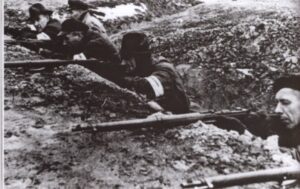 and suffered serious wounds on 20-01-1945, as a result of which he lost an eye. This was followed by a stay in a military hospital in Leipzig until March 1945. At the end of the war, which he experienced as a Nazi courier in South Tyrol, Jagow on 26-04-1945 (aged 53) committed suicide in the Merano apartment of the German ambassador to the fascist Italian Social Republic, Rudolf Rahn,
and suffered serious wounds on 20-01-1945, as a result of which he lost an eye. This was followed by a stay in a military hospital in Leipzig until March 1945. At the end of the war, which he experienced as a Nazi courier in South Tyrol, Jagow on 26-04-1945 (aged 53) committed suicide in the Merano apartment of the German ambassador to the fascist Italian Social Republic, Rudolf Rahn, 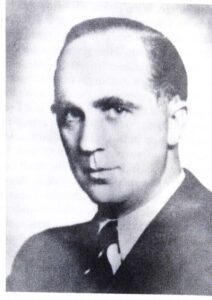 on 26-04-1945. In a not unbiased “denazification procedure” in mid-February 1950, the court in Freiburg im Breisgau ruled that von Jagow was a “minor incriminate” and had “not emerged” as a propagandist.
on 26-04-1945. In a not unbiased “denazification procedure” in mid-February 1950, the court in Freiburg im Breisgau ruled that von Jagow was a “minor incriminate” and had “not emerged” as a propagandist.
Jagow, Dietrich Wilhelm Bernhard von is buried at the War cemetery in Meran, Südtirol, Italien. Via San Giuseppe 17, I 29012 Merano.
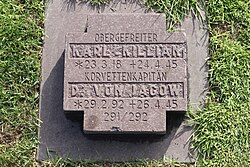
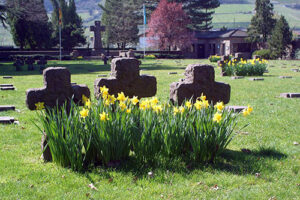
Message(s), tips or interesting graves for the webmaster: robhopmans@outlook.com
















Leave a Reply